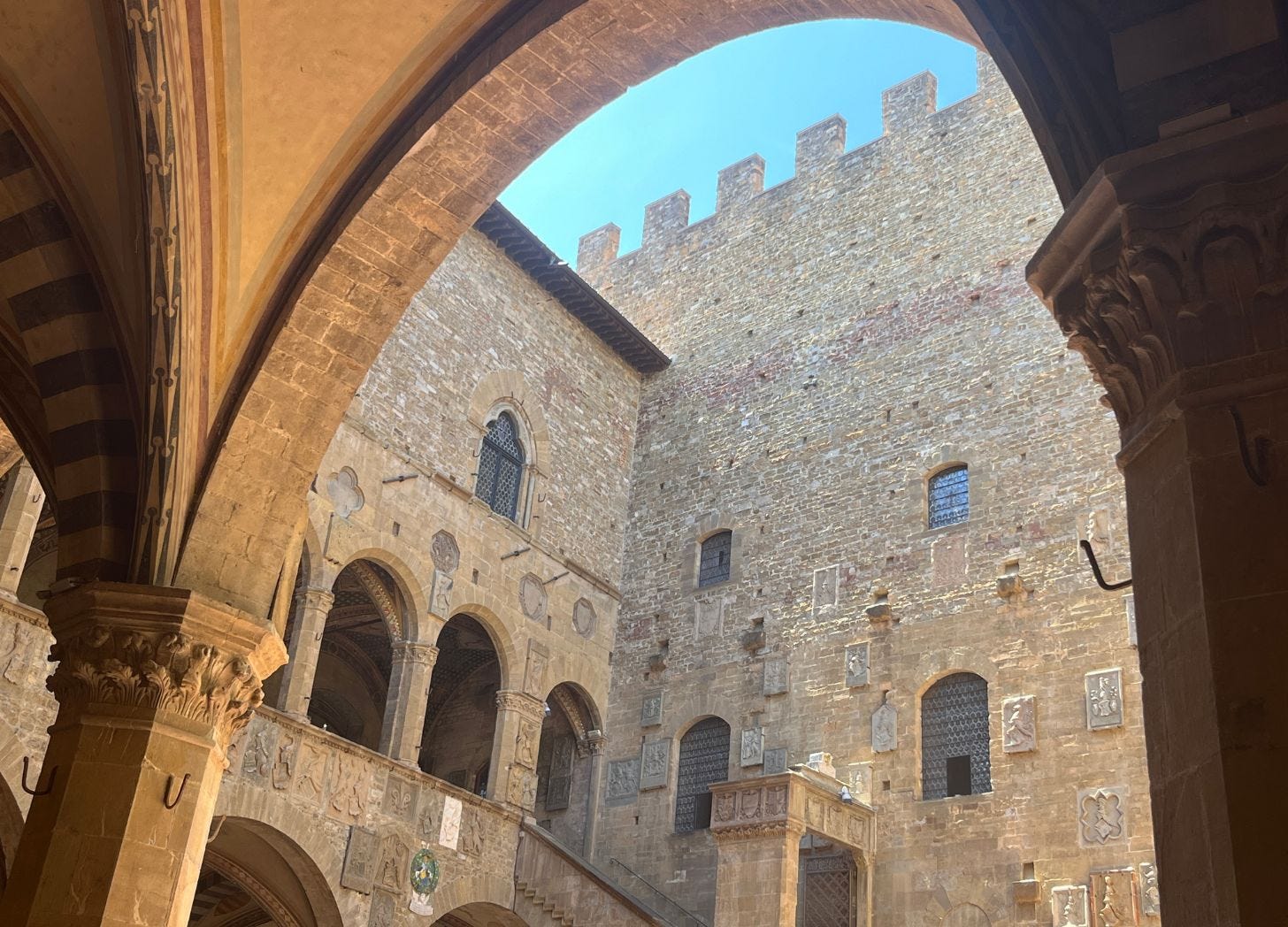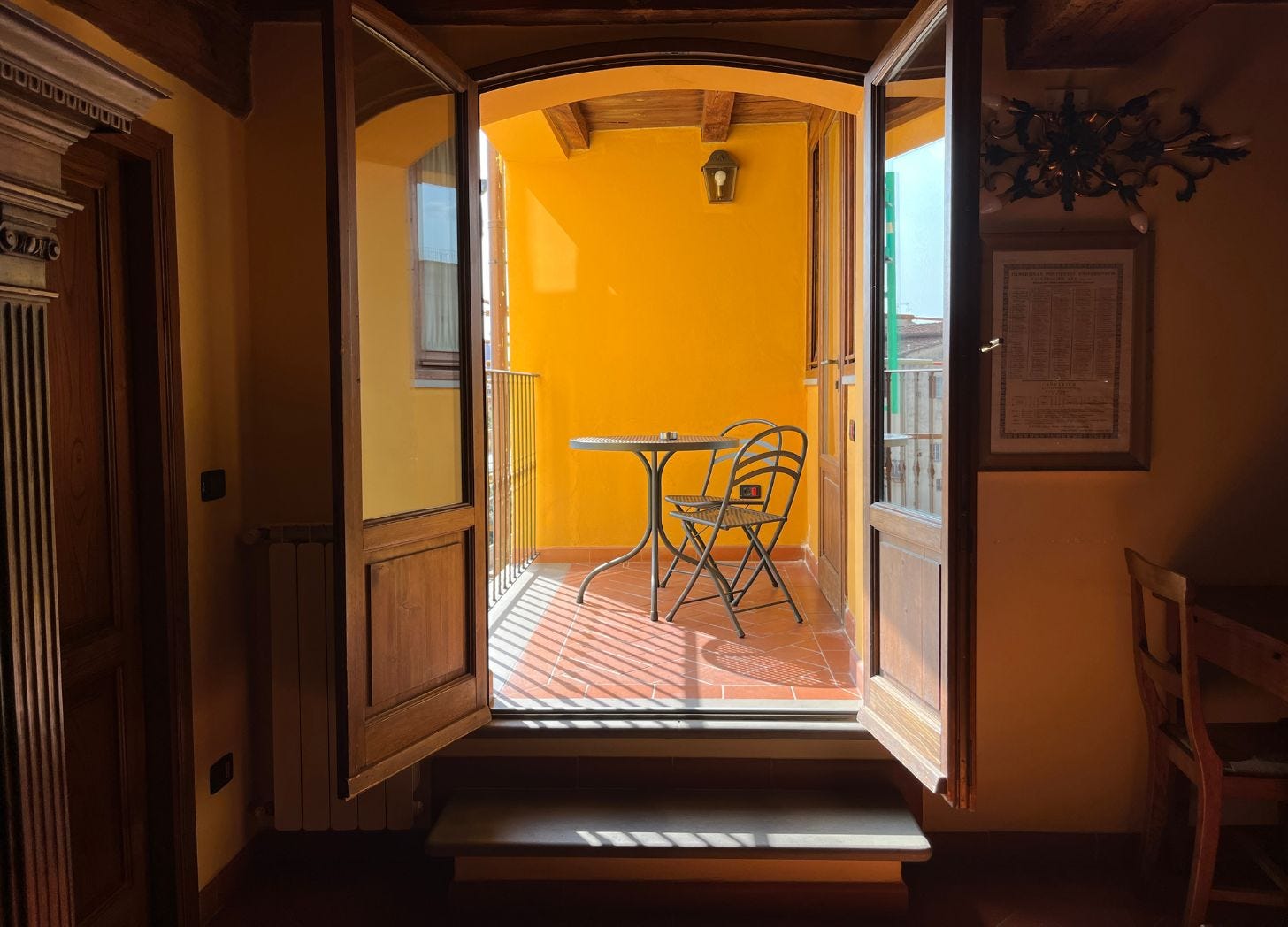The Crown Jewels of Florence
Recommendations from Florentines, indigenous and adopted. In the city of flowers, the gems are hidden in plain sight.
There is a sort of magic in feeling foreign, of stepping out of your life and into a place where you will never fit in. To admire as an outsider, respectfully of course, but free from the constraints of citizenship or societal norms.
Cities and countries unfold before your eyes and bewilder expectations.
Others of us, and I suspect many of my readers, yearn for a connection to the places they visit. You wonder how it would feel to live there, to have your favorite café, to have friends, to say you’re going home at the end of the night.
Behind the scenes with Florentines.
While I’ve made my home in Rome, far from my native Missouri, the impulse still strikes wherever I go. Speaking multiple languages affords me the privilege of more intimate relationships.
I’ll forgo famous monuments in favor of a second or third conversation. These new and enduring relationships provide a sense of home that I crave, if even temporarily.
The Greek word for hospitality is Φιλοξενία, pronounced, filo-xenía. When broken down into parts, it translates as “friend to the stranger or foreigner.” At the heart of hospitality is the Greek for house and home: σπίτι (spiti).
I’ve spent countless hours in Florence over the last two decades. I’ve knocked down walls and cracked open enough doors to feel at home.
Florentine society is notoriously tough to infiltrate. It is my pleasure to invite you in.
Florence: The Project
According to official reports, fifteen million people visited Florence in 2024.
For a city half the size of Cincinnati, that you can cross on foot in thirty minutes, that’s quite a crowd.
Florence enjoys year-round tourism, but surges in spring and summer. Despite the heat and the hordes, Florence is on everyone’s list.
Naturally, there are guidebooks galore and organized tours to help navigate the crowds and hit the highlights. Innumerable influencers claim to uncover “hidden gems” and celebrate the “unmissable spots.”
I was sad to learn that many of them are charging businesses for inclusion in their hot lists and flashy content.
There are plenty of reliable voices out there too, and I look forward to promoting them as part of this project.
This series relies strictly on local recommendations.
I spoke with native Florentines whose ties to the city extend for centuries, as well as long-time residents who fell in love with Florence and forged their sense of home there.
Among the sources who will be featured in the coming months are restaurant royalty (and literal royalty), heritage artisans, bar managers, architects, event organizers, perfumers, hair stylists, fashion designers, travel consultants, and coffee roasters.
Everyone I spoke to not only offered their recommendations, but connected me to someone who, in their opinion, would round out my experience.
Tastefully Premium Content
Much of the series is available for free. Upgraded subscribers have access to all articles and the full archives, plus premium perks, for example, 15% off Florence Platinum Tours. The enterprising band of brothers know the city inside and out, and they’ll show it to you in a fully electric vintage Fiat 500 convertible.
Florence is easy to love.
It’s walkable and well-kept, tidy, and teeming with trattorias and wine bars, each one more inviting than the next.
Centuries-old palazzos are packed with enough artwork to fill up a lifetime. Men and women carved out of marble pulse with impossible life. Mannerist paintings will make you cry at the miracle of human emotion sprung from a canvas.
To catch a sunbeam strike from behind a 14th-century bell tower over espresso and Viennese pastries is a memory in the making.
The sweet and heady scent of leather drifts throughout stone streets, courtesy of artisans, some of whom carry the same trade (and the tools) for generations.
The so-called city of flowers hosts one of the world’s oldest apothecaries, where ancient essences and extractions gave rise to modern perfumery. A rare species of jasmine named for Duke Cosimo III climbs walls and fences. Aquaflor perfumery did their best to bottle it.
400 species of roses bloom in a hilltop garden.
There’s a dizzying array of shops, from the glitz of Gucci and ornate Ginori ceramics to the gold and diamond merchants atop Ponte Vecchio. The Ferragamo Museum might convince you to break the bank on a pair shoes with history in the soles.
Curated boutique owners and young designers from all over Italy and the world rub shoulders with landmark brands and traditional artisans. They came to study and stayed, enamored and inspired by the visible and invisible muse that is Florence.
Renegade jewelers pay homage to the city’s royal roots, blending precious stones and silver with playful skulls, oversized fleur-de-lys and strands of enough sparkling glass beads to rival Venice.
The Arno River curls languidly below the stone bridges. To cross over to the district called Oltrarno, literally “across the Arno,” is to slow your pace and feel the breeze more easily.
Boboli and Bardini gardens crown the hilltops. Quintessentially Florentine in style, they’re a flourish of manicured majesty and a great way to walk off a Chianina steak and too much Chianti Classico.
On the walk back down, I know a great spot for a glass of wine, run by two sisters. Subscribe and stay tuned to hear about it.
For the next several months, you’ll find out where the locals go for the best coffee and cocktails. We’ll try and fail to settle the great gelato debate (very strong arguments for the top two). What’s overhyped and what’s absolutely worth it? Who you should know and what to order at his or her restaurant.
This is their Florence. Now it feels like mine. I look forward to sharing it with you.








